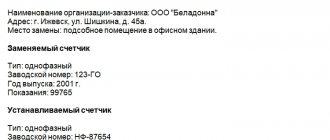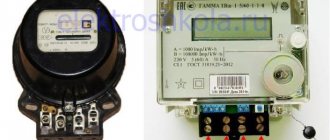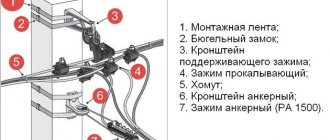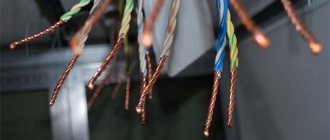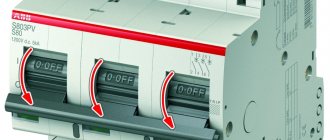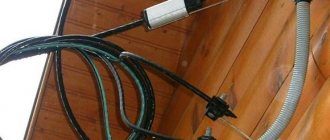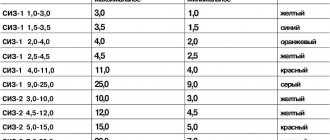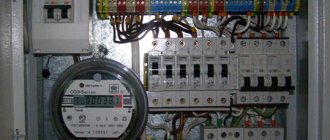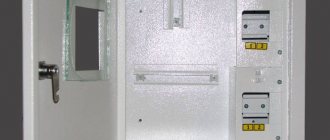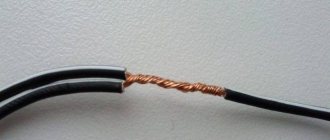Last time, we discussed plastic boxes of the ShchRN-P and ShchRV-P types. Anyone who missed that article can read it here.
Today we will talk to you about other series of plastic boxes. There will be those that are similar in functionality, but there will also be those that are completely different. After all, the boxes that we talked about in the last article are only one, specific type that solves its specific problem. But the list of uses for plastic boxes, as well as the tasks they must solve, does not end there. There are also metering panels, sealing of machines, and so on. Today we will talk about small boxes, which are very similar to what we talked about last time. Let's talk about an analogue of a metal accounting shield, which in our case is made of plastic. We’ll also figure out how to protect modular equipment from unauthorized intervention. And if intervention cannot be avoided, then we will know for sure that it happened. I suggest not to waste time and move on to invaluable knowledge.
KMPn and KMPn with cover
There is a big difference between the two cabinets in the name, despite the similarity of names. Let's figure it out. KMPn is used for installation of modular equipment, such as circuit breakers, residual current devices, circuit breakers, and so on. These boxes are made of polystyrene. Polystyrene is a substance that is obtained by the polymerization of styrene. This substance has good fireproof and shockproof qualities. Styrene itself is a colorless liquid with a specific odor, quite pungent. Polymerization is the complex process of attaching monomer molecules to active sites in a growing molecule. I apologize for the tautology, but there was no other way. As a result of this process, a complex substance is obtained, consisting of the same molecules as the monomer. But this is a miracle, since from one meter of the same substance, which was liquid, a rigid body of a small box was obtained. KMPn boxes are used very widely. They can be found in the residential sector, offices, medical and educational institutions. Since such boxes can be sealed, they are placed in large panels to use this function. In switchboards of the ASU type, for example, the input machine is often sealed.
There are many advantages to such a box, and the very first is the possibility of installing a seal on it. This will help us protect ourselves from electricity theft. Imagine you made electricity and installed a seal on the box. To steal electricity from you, you need to open the box and connect to the machine. But if you open the box, you need to break the seal. Even if someone decides to do this, if you don’t find the filling in place, you will definitely suspect something is wrong. Also, the advantages include a built-in rail for installing modular equipment. In Boxes type KMPn you can remove the side wall. This is done to connect several boxes in a row. This installation option is very useful, since you can get by with small KMPn, and not use bulky ShchRN-p. The entire KMPn body is assembled with latches, without the use of self-tapping screws. This is a plus, since you don’t need anything to assemble such a box. You only need a regular slotted screwdriver. The latches are made in such a way that it would be most convenient for her to work with them.
Topic: Do they have the right to seal a machine?
Theme Options
- print version
- Send by email...
- Subscribe to this topic...
Display
Linear view
- Combined view
- Tree view
Do they have the right to seal a machine?
What regulatory document do energy sales services use when they require installing a machine with sealable curtains in front of the electric meter?
Energosbyt does not have the right to force the installation of casings for sealing on input protection devices, although there is no crime in this, but there is no point in this sealing. If they want to steal, then they don’t need much intelligence. They are required to seal the electricity meter based on the PUE, clause 1.5.13. Each installed settlement meter must have seals with the state verifier's mark on the screws securing the meter casing, and on the clamping cover - a seal from the energy supply organization.
Means for metering electrical energy and monitoring its quality must be protected from unauthorized access to eliminate the possibility of distortion of measurement results.
The circuit breaker does not apply to electricity metering devices. Electricity metering rules
(approved by the Ministry of Fuel and Energy of the Russian Federation and the Ministry of Construction of the Russian Federation on September 19, 26, 1996)
Metering means
- a set of devices that provide measurement and accounting of electricity (
current and voltage measuring transformers, electric energy meters, telemetric sensors, information-measuring systems and their communication lines
) and interconnected according to the established scheme.
Verified settlement meters must have the seal of the organization that performed the verification on the casing, and the seal of the energy supplying organization on the cover of the meter terminal block.
To protect electrical measuring instruments, switching devices and detachable connections of electrical circuits in metering circuits from unauthorized access, they must be marked with special visual inspection signs in accordance with established requirements.
bulochkin
, if you give some link from the technical documentation, then you must indicate where it comes from. Now you cite PTEEP, clause 2.11.18, which talks about accounting chains. Read carefully and analyze, and then only approve. When putting an electrical installation into operation, you must be guided by the requirements of the PUE. The input circuit breaker in the ASU cannot be classified as a means of electricity metering, since in accordance with the PUE, clause 7.1.25, it should be considered as a protection and control device. Installing seals or other structures on the protection device is contrary to the current requirements of the Civil Code and NTD. ESO does not have the right to deprive the consumer of the opportunity to test, repair and maintain parts of the electrical installation that are owned by the consumer. Based on Article 543 of the Civil Code of the Russian Federation, the subscriber is obliged to ensure the proper technical condition and safety of the operated energy networks, devices and equipment, comply with the established energy consumption regime, and also immediately notify the energy supplying organization about accidents, fires, malfunctions of energy metering devices and other disorders that occur when using energy. Requirements for the technical condition and operation of energy networks, devices and equipment, as well as the procedure for monitoring their compliance, are determined by law, other legal acts and mandatory rules adopted in accordance with them. Based on Article 210 of the Civil Code, the owner bears the burden of maintaining the property he owns.
Switch VA-4763 (for sealing) 2p
Automatic switches are automatic switching devices that are produced in 1, 2, 3 and 4-pole versions.
The peculiarity of these devices is their improved design. They have plastic covers that block access to the clamp and serve to seal the switch.
The body is additionally reinforced. rivets so that the body does not come apart. The devices have a convenient control handle.
APPLICATION
Switches BA 4763 2P produced by the Electrocontactor Plant are widely used in residential, industrial and administrative buildings and structures:
Overload protection;
Short circuit protection;
Carrying out electric current as usual;
As the main element in the distribution system (final);
ADVANTAGES
— Indicator window for contacts;
— The front panel is monolithic;
— Two-position clamp for Din rail;
— Panels for sealing;
— Notches on the terminals;
— Increased body rigidity;
ATTENTION: Dear customers, be careful! Cases of complaints regarding counterfeit products have become more frequent. Purchase products from official dealers or from the manufacturer.
Warranties apply only to original factory products.
The site provides brief background information. Additional technical information can be obtained upon request with your application.
- Hydraulic pushers TE
- Command devices
- Command controllers
- Contactors
- Reels
- Contacts
- Crane brakes
- Current relay
- Brake magnets
- Automatic switches
- Limit switches
- Buttons, clips and lighting fittings
- Cross switches
- General industrial switches
- Packet switches
- Universal switches
- Push-button posts
- Circuit breakers
- Electromagnetic starters
- Time relay
- Voltage relay
- Intermediate relay
- Thermal relay
- Switches
- Transformers
- Electromagnets
- Measuring instruments
- Low voltage distribution and control devices
- Lighting boards
- ShchMP
Subscribe to news
OOO
(343) 383-33-33 319-54-69 319-50-03 345-54-69
E-mail:
ICQ
389-223-358
Skype:
elektrokontaktor8 elektrokontaktor9
Sales department in Chelyabinsk: (351) 2-777-444
Sealing with a shield
Using this method allows you to seal the input machine in the shortest possible time. All switching devices, as well as the metering device, are covered by one common shield, which is already directly sealed.
It would seem that everything is fine, you can easily and quite quickly seal the AB. However, imagine a situation where you need to quickly replace a single component, not necessarily the machine itself. That's right, to get to it you will have to break the seal of the entire shield. Is this legal? Obviously not. It is necessary to call a representative of Energosbyt to unseal the entire cabinet, and this entails a loss of time and money.
Technical characteristics of boxes
The technical characteristics of distribution boxes include the class of electrical insulation and protection, the type of material from which the housing and other components are made, the overall dimensions of the box and the number of modules it can accommodate.
Electrical insulation and protection class
Correspondence table for protection classes
All modern models of boxes have class II electrical insulation, so they can be installed in rooms with humidity up to 85% and in outdoor conditions.
According to the degree of protection against penetration of mechanical particles and moisture, boxes can belong to the following classes:
- IP30 – installed inside residential premises. Provide protection to devices inside from mechanical particles larger than 2.5 mm. This box does not protect against drops of moisture.
- IP40 is also a box installed inside residential premises, which protects devices placed inside it from mechanical particles larger than 1 mm, without providing protection from dripping moisture.
- IP55 is a universal distribution box that can be installed inside residential premises, bathrooms, and outdoors. Fully protected against dust and jets of water.
In most cases, distribution boxes of the first two classes are used - they are more affordable and at the same time provide the necessary protection from dust and large particles for residential premises. IP 55 class boxes are used less frequently - they are more expensive and are not always justified when installed in rooms with low humidity.
Material of manufacture of the body and parts
The following materials are used to make the body and lid of the box:
- Polymers - fire-resistant polystyrenes, ABS plastics of various colors (from white to brown or even red).
- Metal - sheet steel up to 1.5 mm thick.
Tires for grounding and neutral wire are made of high quality copper. The DIN mounting rails that regulate the height of the installation are made of polyphenylene oxide.
Number of rows and modules
The number of rows in modern models of boxes for automatic machines ranges from 1 to 4, installed modules (machines, switches and other devices) from 2 to 56-60 pieces.
Nominal parameters of shields
A box for electrical automatic machines, depending on the number of devices built into it, may have the following overall dimensions:
- height – from 125 to 714 mm;
- depth – from 58 to 88 mm;
- width – from 44 to 359 mm.
Overall dimensions of Volta series switchboards
The maximum weight of plastic distribution boxes is 1.5-2.0 kg, metal - 4.6 kg. The boxes are used in networks with voltages up to 400 V and currents from 5-6 to 63 A.
Electrical panel design
Electrical distribution panel
The simplest and most common box for automatic machines consists of the following parts:
- The front panel (cover) is equipped with an opening transparent door and breakable sections for installing a certain number of machines and other devices. Attached to the main body with 4 plastic screws. Depending on the model, the door can be equipped with either a simple self-latching push latch or a lock with a core and a set of keys.
- The body is the three-dimensional main part of the box, inside which all the machines, the RCD, and the counter will be located.
- DIN rail is a metal strip for mounting machines and other devices in the box.
- 2 buses for connecting the neutral and grounding conductors.
Typical electrical panel design The
distribution panel set also includes special dowels for attaching the box to the wall, a support (protective casing, holder) for the neutral and grounding buses.
In some models, DIN rails are mounted on special removable holders that allow you to adjust the height of its installation relative to the front panel.
Types of fillings
A seal is considered a disposable element that allows you to verify the fact of unauthorized entry into a protected object. They increase the effectiveness of a number of organizational and practical activities:
- Eliminate or minimize energy losses;
- Make a more efficient system for accounting for electricity consumption;
- At production facilities they have a positive effect on work culture and discipline.
The main task of the filling is not to be able to remove it without external factors of damage, which will be immediately noticeable. All types of fillings can be divided according to the following characteristics:
- Material of manufacture;
- Constructions;
- Operating principle.
A cable seal can be used as a lock; the strength, flexibility and length of the cable allow it to be threaded through misaligned holes in cabinet doors or hinges. The cable is pulled through a plastic destructible housing with an individual number.
The UNISIL plastic seal has a tightening design with a reliable lock, which has a metal insert with four petals, and has a pressed individual number on the plastic surface.
KRABSIL – a metal seal in the form of a clip, fixed with a spiral wire, an individual number is pressed onto the surface of the clip;
| Basic Attributes | ||
| Manufacturing company | Envoseal | |
| State of origin | Britannia | |
| View | KRABSIL special | |
| Purpose of sealing | Barrels, Household electric; water meters, Electrical appliances, and other equipment | |
| Material | Zinc coated steel | |
| packaged | 1000(pieces) | |
EDSIL-N is a plastic seal, actually an analogue of the UNISIL brand
Lead and polyethylene seals - have a diameter of 10 or 16 mm2, a cylindrical shape through the holes of which a wire is passed, after which the entire structure is pressed with a seal with an imprint of a number or other individual sign.
Sealing stickers have a special chemical composition of the adhesive layer; when the sheet is removed from the surface, it makes no sense to stick it in its original place, the inscription “Opened” or “Opened, Draw up a report!” appears.
Several types of reverse-type numbered plastic seals
Numbered plastic seals – have a cylindrical transparent body with an individual number. The seal is attached to a wire loop, secured with a plastic latch or a rotating mechanism, after which the rotary flag is broken off.
| Basic Attributes | ||
| Company | YANGUL | |
| State | Ukraine | |
| View | Rotary seal with a rotating mechanism | |
| Objects to be sealed | Household electric water meters, tachographs, electrical appliances, and other equipment | |
| packaged | 1000(pieces) | |
- Price: 1.88 UAH. – 4.7 rub.
To seal elements of electrical installations, plastic or lead seals are most often used.
Is it necessary to seal the input circuit breaker?
Electrical wiring was installed in the country house. An input switch was installed in the electrical panel in front of the electric meter.
The auditor stated that the installation was carried out incorrectly, and that in order to prevent theft of electricity, the input switch should be mounted in a separate panel, which should be sealed. How legal is such a requirement, is this issue regulated by any regulatory document?
Share on social networks
Comments and reviews (1)
Makarov Dmitry (Expert)
You did the right thing by installing a circuit breaker in front of the meter. Its use is necessary for the possibility of safely replacing the metering device in the future, removing it for verification or routine calibration, etc. This option is indeed provided not only for safety reasons, but also by the requirements of clause 1.5.36 of the PUE, which states: “For safe installation and replacement of meters in networks with voltages up to 380 V, it must be possible to turn off the meter by switching devices installed before it at a distance of no more than 10 m device or fuses. Voltage relief must be provided from all phases connected to the meter.”
We also see the requirement to use a switching device in front of the metering device in clause 7.1.64 of the PUE, which reads: “For the safe replacement of a meter directly connected to the network, a switching device must be provided in front of each meter to relieve voltage from all phases connected to the meter ."
Therefore, your actions are fully justified in front of the inspector and the connection of the metering device is carried out in accordance with the requirements of the PUE. Moreover, the presence of an automatic machine provides additional protection in case of an emergency directly in the metering device.
Regarding the sealing of the machine, this is a mandatory procedure, since the entire line to the metering device is transferred to the balance of the electricity supply organization in accordance with the demarcation act. Without a shield, you can freely connect to the terminals of the machine and take electricity without accounting, and you can install a plastic shield in two positions - simple and inexpensive. Although in an amicable way, after drawing up the demarcation act, both the shield and its sealing should become the concern of the energy company, and not your headache.
